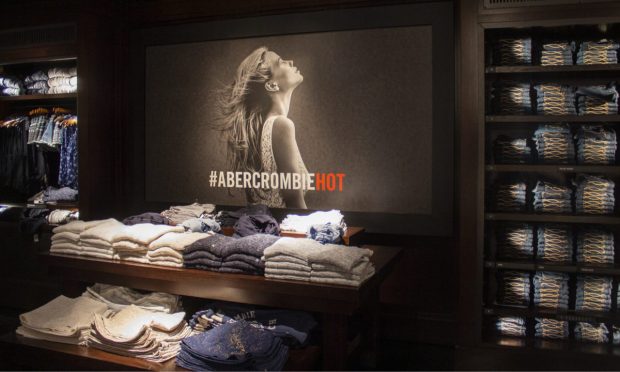Abercrombie & Fitch: Inflation Impacts Some Brands More Than Others

Inflation and other economic pressures are affecting brands in different ways, even when they belong to the same corporate parent.
Abercrombie & Fitch reported Thursday (Aug. 25) that in the quarter ended July 30, the sales of its Abercrombie brand were up 5% year over year, while those of its Hollister brand dropped 15%.
“As the global macro environment deteriorated in the second quarter, we experienced a divergence in brand performance,” Abercrombie & Fitch CEO Fran Horowitz said in a press release. “Abercrombie delivered its highest Q2 sales since 2015 and its ninth consecutive quarter of average unit retail (‘AUR’) growth.
“This was more than offset by Hollister, where we saw a greater than anticipated impact from inflation and a shift away from core categories to more fashion-driven product, contributing to lower-than-expected conversion and basket size.”
The Abercrombie & Fitch brand focuses on quality apparel, outerwear and fragrance, while the Hollister brand features apparel aimed at teen consumers, the company said in an investor presentation released Thursday along with the earnings call.
In response to the current trends, Horowitz said the company has right-sized its Hollister inventory receipt plan and will continue to monitor sales volumes and react to inventory turns.
See also: Rise of Concept Stores Continues As Abercrombie Tests New ‘Getaway’ Brand
Beyond that, Abercrombie & Fitch will continue to focus on accelerating digital and technology investments, seeking expense efficiencies and taking a data-driven approach to store expansion through the end of 2022, the company said in the presentation.
Abercrombie & Fitch expects inflation to continue affecting consumer demand through the remainder of the fiscal year. For its fiscal year 2022 full year outlook, the company expects net sales to be down mid-single-digits as opposed to its previous outlook, which forecast them to be flat to up 2%.
“Our revised outlook reflects the uncertain environment for the back half,” Horowitz said. “As we have successfully done over the last several years, we will continue to navigate near-term challenges and reduce spend where appropriate while executing to our long-term goals.”
For all PYMNTS retail coverage, subscribe to the daily Retail Newsletter.